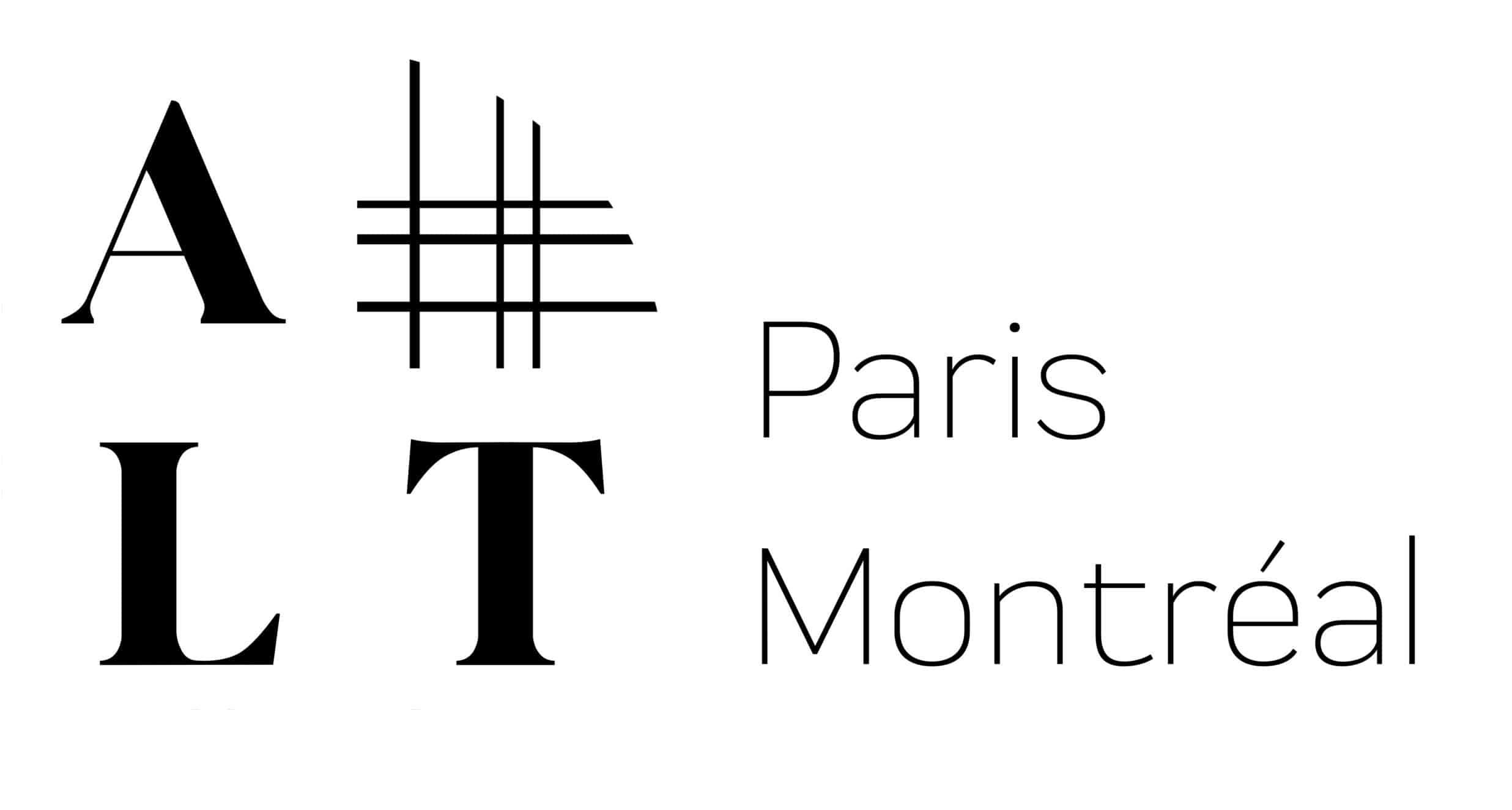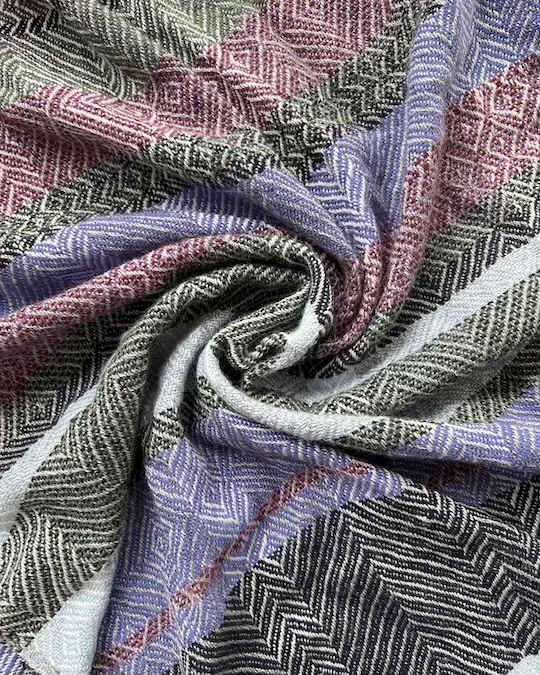CREATION #107
"Running Up That Hill"
Cashmere & Merino Wool
September 2023
THE PATTERN
Weaving In Morse Code
Across the width of the piece, the pattern develops in light or shaded areas, each with diagonals that are sometimes short, sometimes long. This particular rhythm is that of the Morse code, which the weaving adopts to transcribe the word “Inspiration“:
I N S P I R A T I O N
•• / —• / ••• / •— —• / •• / •—• / •— / — / •• / — — — / —•
The columns drawn by the diagonals have the value of • for the thin ones, and — for the wide ones.
Here is how the word “PARIS” would be woven in Morse code:

Weaving Music
Along its length, the piece unfolds in a succession of broad and narrow stripes. This specific geometry transcribes the poetic melody of Kate Bush’s song Running Up That Hill, with each note represented by a different color and the lines mirroring the rhythm of the composition. The fabric itself becomes a musical score.

Finding The Key
At the start of the fabric, the piece’s ‘G Key’ is woven: between two dark blue lines—later used in the weaving to represent rests—each note is depicted by two threads of its designated color, organized in the order of the musical scale.
To aid orientation, the note G is marked by a wider line of four threads—in blueish lilac within this composition. This unique creation features nine different colors.

Accidentals (sharp, flat) are represented by the use of alternating threads of the two adjacent solid notes: in this scarf, B flat is represented by alternating purple (B) and burgundy red (A) strands.

On the edges of the piece, the fabric bears Atelier Le Traon’s textile signature in brown and blue cotton.
THE MAKING OF THE SCARF
Weaving is a complex process that involves several steps. It all starts with the warping, that consists of preparing the threads (the “warp”) that will be installed and connected to the loom.
Weaving
Once the warp threads are connected to the loom’s mechanism and their tension is adjusted, the weaving can start.
Weaving is a true dance that engages the body, heart, and mind. In a precise sequence dictated by the pattern, the feet press on treadles that activate the frames supporting the warp threads, while the hands introduce the shuttle carrying the weft thread.
Off The Loom
At the end of the weaving process, the piece is unrolled and removed from the loom.
The fabric is then fulled—washed, and kneaded, massaged—to make the fibers ‘blossom’ and bind together, resulting in a final soft and light texture.
Finally
Creation #107 “Running Up That Hill” can be interpreted like a music score: let the music unfold before your eyes and ears…

Care Instructions
Caring for the fabric is quite simple, as the natural properties of animal fibers (such as wool and cashmere) make it resistant to dirt and antistatic, preventing dust from accumulating.
For a gentle refresh, once a year, soak the fabric by hand in lukewarm water with four or five drops of a gentle dishwashing liquid. Lightly massage the fabric.
Rinse the cloth again in clean water at the same lukewarm temperature, then gently squeeze out the water without wringing.
Lay the fabric flat on a bath towel and roll it up to absorb any excess water.
For difficult stains (such as wine or coffee), it’s best to entrust the scarf to a specialist.
If you need assistance, don’t hesitate to contact the workshop for advice. The Atelier keeps surplus threads for each piece, allowing for small repairs if necessary (such as after a snag).





